“The rich marine life under frozen ice”, BBC Future
By Richard Hollingham, 5th December 2022
When scientists searched beneath the polar ice, they discovered this freezing environment was home to a surprising amount of life.
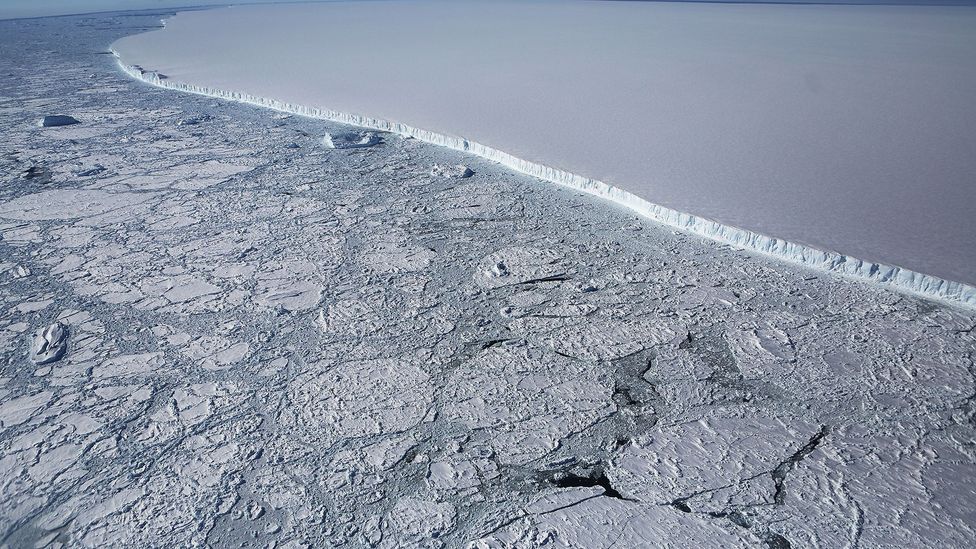
Spend any time looking for polar bears and you soon realise how perfectly adapted they are to hunting. Despite their sizeable bulk, trying to spot creamy-coloured bears against the flat white Arctic sea ice that blends into a light grey overcast sky is quite the challenge. But miss one and lives are at stake.
It was the Arctic summer. I was stationed on the top deck of a UK polar research vessel, the RRS James Clark Ross, moored to an ice floe some 800km (500 miles) from the North Pole. Whenever a team of scientists was out on the ice, at least two people were on polar bear lookout duty. As the BBC reporter on the ship (you can still hear the archived programme here) – hardly an essential role – I spent a lot of my time assigned to scanning the horizon with binoculars looking for one of the few animals on Earth that thinks of humans as prey.
Had we failed, and a bear threatened anyone’s survival, there was a last resort: every group on the ice had a gun to shoot a bear dead.
Polar bears are one of the most impressive animals on the planet and, during our week on the ice, we were lucky enough to see several. We watched one evening from the safety of the ship as a bear tore at our mooring ropes and smashed in a flight case containing the wrappers from our sandwich lunch. It must have somehow smelt them through the thick metal.
You might also like:
- The town where wi-fi is banned
- The daring plan to save Arctic ice
- The record-breaking dive under Arctic ice
But while the bears were captivating to watch, the team of scientists I was following considered them an inconvenience to their research. They were more interested in the other end of the food chain, in a hidden and vibrant world of green beneath, and within, the ice formed by microscopic algae.
“People sometimes call phytoplankton – which is algae in the water – the forests of the sea,” says Karen Frey, a professor of geography specialising in polar science at Clark University in Worcester, Massachusetts.
A frequent visitor to the Arctic, Frey studies the importance of these microscopic plant-like organisms. “Half of all photosynthesis on the planet occurs in the world’s oceans, which means that half of all oxygen we breathe is from the ocean.”
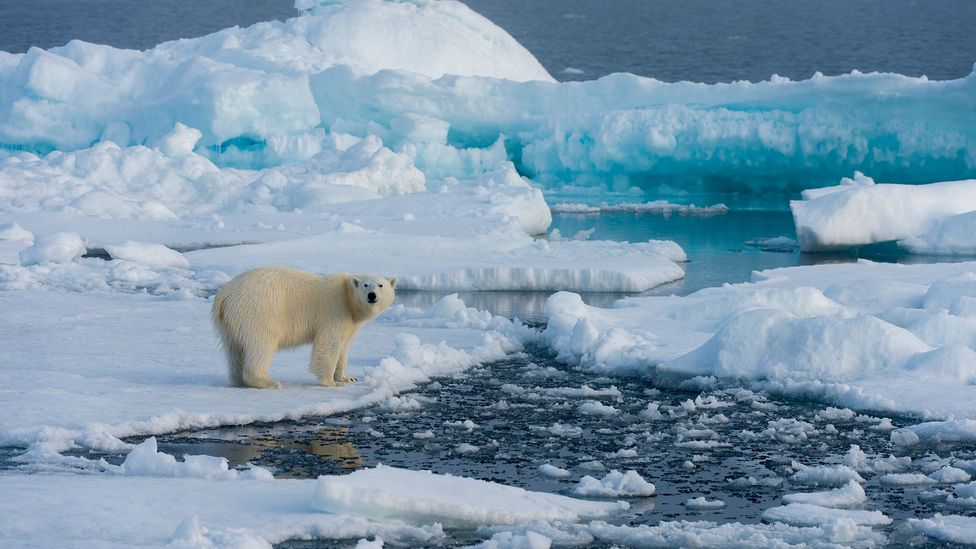
Polar bears are one of the few animals on Earth which consider humans to be potential prey (Credit: Wolfgang Kaehler/LightRocket via Getty Images)
But, compared to more temperate climes, life around the North Pole is unusual. In winter it is dark for 24 hours a day, making photosynthesis impossible. “Then as the Sun returns, all of a sudden you get these massive spring blooms of algae across the region – in the ice and in the water column – and everything further up the food chain can take advantage of that,” says Frey.
“The fish come along, the seals come along and the polar bears feed on them – and everything stems from that initial production of biomass in the ocean.”
It’s not only the polar bears that ultimately benefit – fish are a vital source of food for a variety of animals, including people, and essential to the economies of Arctic nations.
Frey’s research suggests there is much more algal life beneath the ice than previously thought. Because the Arctic isn’t a solid sheet of ice but consists of sheets of ice broken up by ponds of melted water, light penetrates the surface like skylights into the world below.
There are plenty more surprises to find beneath the frozen sea even in the Antarctic winter
There’s light available in the water column to sustain photosynthesis,” she explains, “and that’s pretty remarkable, so there can be quite a productive ecosystem even when the sea ice is in place.”
Meanwhile, at the opposite end of the planet, the oceans similarly come alive with plant life in summer. But there are plenty more surprises to find beneath the frozen sea even in the Antarctic winter. If you dare.
“Outside it’s -27C (-16F) and you are essentially immersing yourself in -1.8C (28.7F) water, the temperature sea water freezes at, so you need to stay as warm as possible,” says Nadia Frontier, British Antarctic Survey (BAS) marine biologist and diver. When we speak, she’s in her lab at the BAS research station in the Antarctic Peninsular – although thanks to the wonders of satellite internet, we are still able to connect on Zoom.
Quite apart from multiple layers of warm and protective clothing, winter diving in Antarctica involves cutting two holes in the sea ice – one to enter the water and a second emergency exit route. This might be used if a seal decided to use the first hole to hunt or, more worryingly, if a leopard seal or killer whale came near. Leopard seals are known to be dangerous to humans, and killer whales could also be a concern.
“The hole is like a bath, because it’s quite a narrow opening and you’re hitting the edge of the ice with your tanks because it’s so thick,” Frontier says. “But once you’re in and beneath the ice, it’s incredible.”
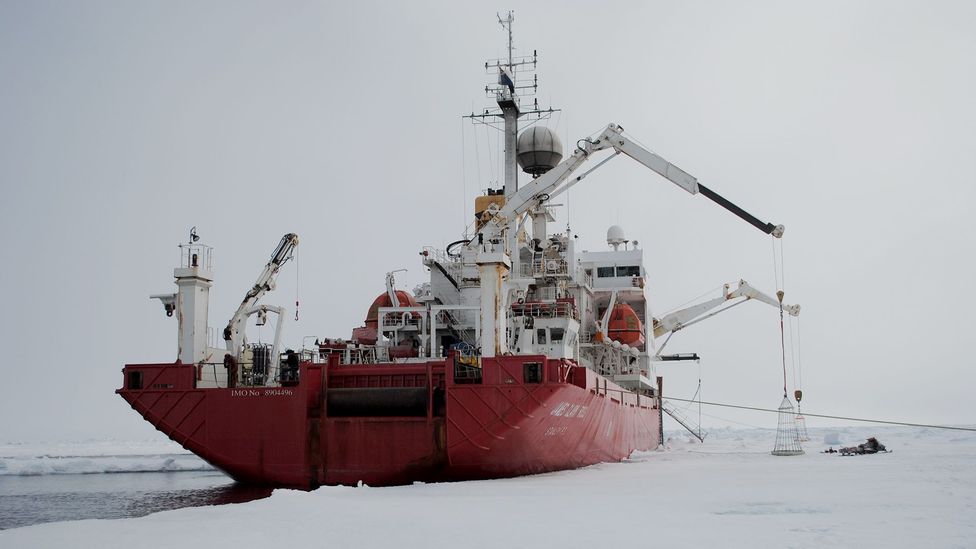
Expeditions on ships such as the James Clark Ross, seen here in 2010, have delved under the Arctic ice to find life (Credit: Richard Hollingham)
“I find the explosion of lifeforms absolutely fascinating – you go down underwater and within a single metre you could have hundreds of different species,” she says. These range from the microscopic, through tiny marine animals to giant sponges, crabs and starfish.
“And you have virtually every colour of the spectrum – from sea cucumbers that are pink, sea fans that are purple with blue in them and sponges that are a vibrant yellow.
“You also have this phenomenon called gigantism,” Frontier explains. “Because the water is so cold, it can absorb more oxygen, so species are not limited by lack of oxygen in the water and can grow to gigantic sizes.”
Life below freezing also operates on a different timescale, which puts our human lifespans into perspective. “Some sponges have been dated as living for thousands of years,” says Huw Griffiths, BAS marine biogeographer.
Unlike the sea ice in the Arctic, the ice shelves surrounding the Antarctic continent are solid, impenetrable and near-permanent
“Colleagues of mine have come back to the same rock after three years and seen the same two starfish in exactly the same position – they’re alive and well, they just don’t need to feed that often.”
In 2021, Griffiths revealed the extraordinary discovery of Antarctic life on the ocean floor, some 260km (161 miles) from open seas, trapped in the waters beneath an ice shelf more than a kilometre thick. Unlike the sea ice in the Arctic, the ice shelves surrounding the Antarctic continent are solid, impenetrable and near-permanent. “There’s no light down there, no sound, no gases from the atmosphere, it’s like the end of a big cave.”
In fact, Griffiths wasn’t even looking for life beneath the ice shelf – he was at sea on a research ship at the time, hundreds of kilometres away doing, as he describes, “some proper marine science”. The credit goes to a team of geologists hoping to get a core of mud from the ocean floor.
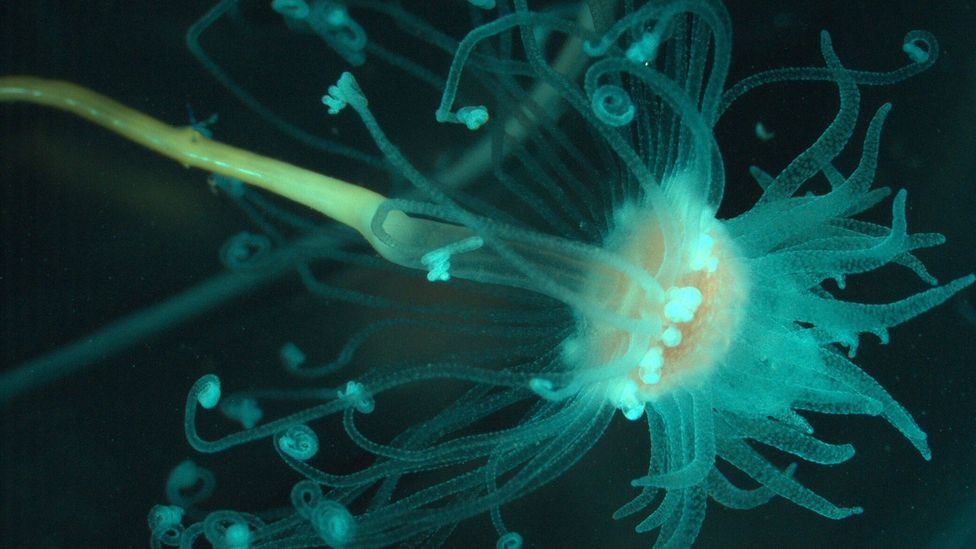
The frozen waters of polar regions are home to strange life such as this Cnidaria (Credit: Universal History Archive/Getty Images)
“They were hoping to get some mud, which they could use to date how the environment had changed over millions of years – like the rings on a tree,” says Griffiths. “They’d spent weeks preparing, picking their site and drilling through the thick ice and then, instead of mud, they hit a rock – so for them it was a disaster.”
Fortunately, the geologists had attached a small video camera to the drill which captured the moment it hit the rock and bounced onto the seafloor. When they retrieved the camera’s memory card and watched it back, they saw sponges and previously unidentified animals clinging to the surface. These are all stationary filter feeders that extract food from the water. But the question is: what food?
“It’s one of the longest distances from a food source you can imagine on the whole planet,” says Griffiths. “Before I saw the video, I’d been part of a [research] paper that said we don’t expect to find filter-feeding animals like sponges this far back under the ice shelf and then we find the only life… are filter-feeding animals.”
It proves the concept that life doesn’t always need the conditions that humans think that life needs – Huw Griffiths
The discovery is as exciting as it is frustrating. “How are they living? What are they eating? How did they get there? It’s impossible to tell from what we’ve seen and that’s why we really have to think carefully about how we go back and look at these kinds of animals without destroying the habitat.”
Griffiths is now working as part of an international team of scientists to put together an expedition to return. They plan to send small robots into bore holes in the ice and launch robotic submarines hundreds of kilometres under the ice shelf. Crucially, making sure they don’t damage any of these strange creatures in the process.
The discovery not only shows how much there is still to discover on Earth but also points to the possibilities of finding complex life on alien worlds elsewhere in the Solar System. Space agencies are increasingly focusing their life-hunting efforts on icy moons, such as Jupiter’s satellite Europa. Like the Antarctic, Europa is covered in vast sheets of ice above, scientists believe, a liquid sea.
“I’m not saying we’re definitely going to find anything in space that will resemble any of the things we’ve found,” says Griffiths. “But it just proves the concept that life doesn’t always need the conditions that humans think that life needs.”
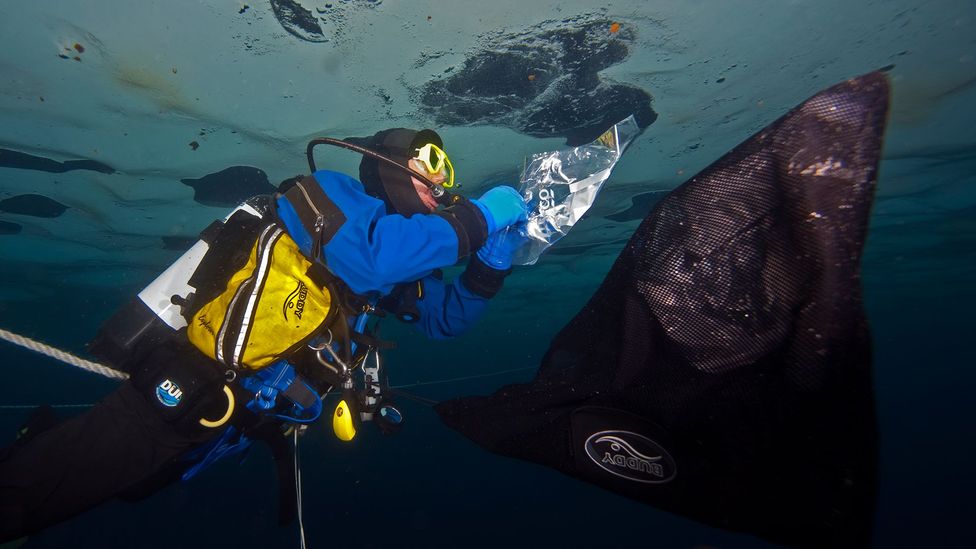
Collecting samples of algae, such as here in the Arctic in 2010, is challenging work (Credit: Scottish Association for Marine Science)
New discoveries of life beneath the ice – whether species of algae or these more complex lifeforms are being made almost every season. But, as the Earth heats up and the oceans warm due to climate change, the conditions are changing at a rapid rate.
Back in the Arctic, Frey is tracking the spread of the sorts of poisonous algal blooms that frequently occur further south, a threat to sea life and everything that eats it.
“If they’re toxic, they can be really harmful in terms of shellfish poisoning or certain species can clog the gills of salmon and other fish species,” she says. “It’s really important to monitor them, particularly in terms of the indigenous communities that are heavily reliant on subsistence hunting.”
Climate change is an added pressure on scientists to document and understand life beneath the ice. Because what we know now is just the tip of the iceberg.
“We’re constantly making new discoveries,” says Frontier. Recently, for instance, BAS scientists found a species of seaweed that only sees sunlight two weeks a year but can seemingly store that energy for the remaining 50 weeks. “There is so much left, you could spend so many lifetimes investigating life here.”
“It’s probably the easiest win,” adds Griffiths. “If you wanted to see something nobody’s ever seen before, you need to try to get under one of these ice shelves – there are so many stories to tell.”
—
Join one million Future fans by liking us on Facebook, or follow us on Twitter or Instagram.
If you liked this story, sign up for the weekly bbc.com features newsletter, called “The Essential List” – a handpicked selection of stories from BBC Future, Culture, Worklife, Travel and Reel delivered to your inbox every Frida